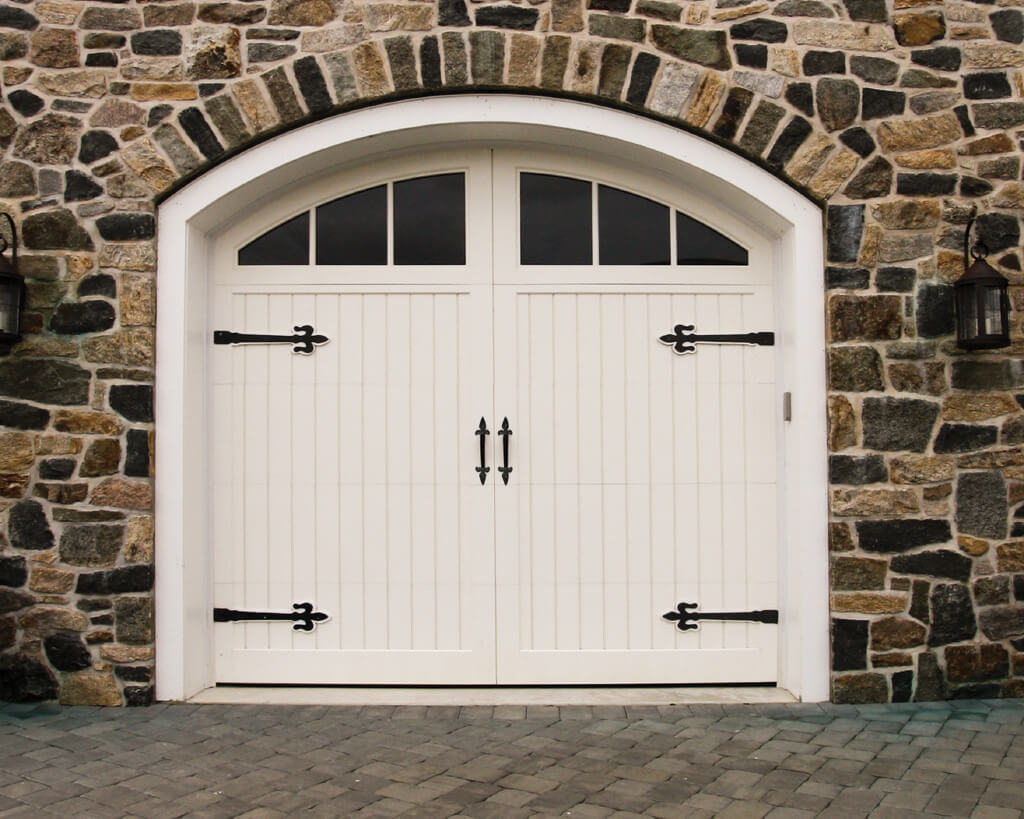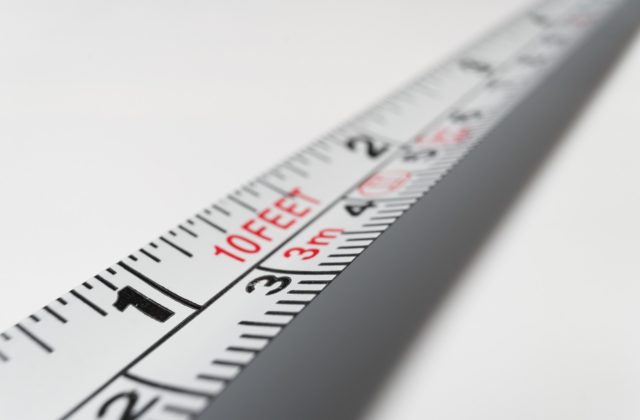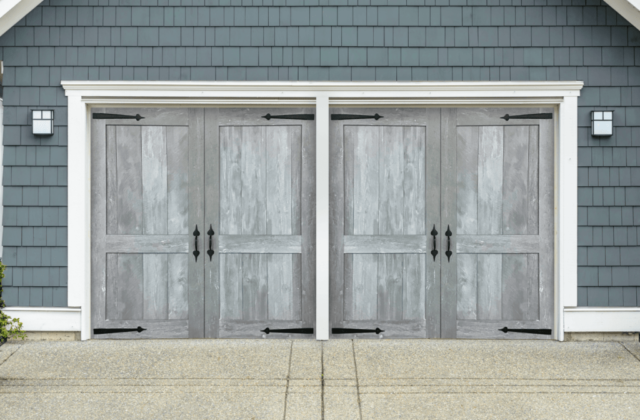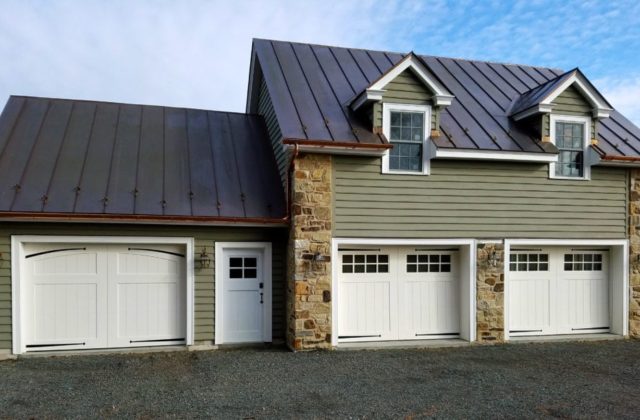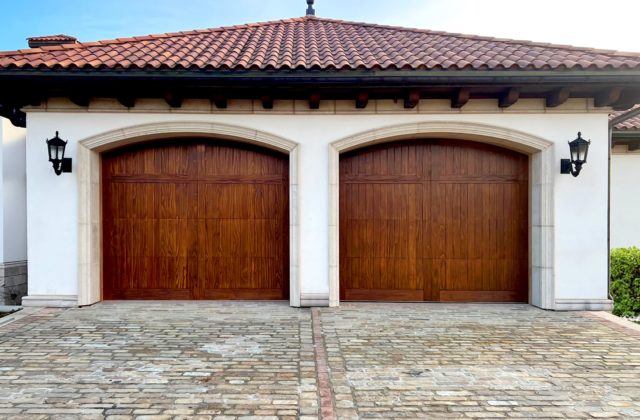The advent of cold weather can bring a host of garage door problems in winter. From warped metal tracks to condensation on sensors, there’s the potential for plenty of costly repairs. The best way to anticipate and avoid problems is by performing regular maintenance on your garage door. However, we understand that issues may still crop up. In this blog, we’ll run through a variety of problems that you may encounter with your garage door during winter.
Start By Making an Initial Diagnosis
Rather than jumping to conclusions (and worst-case scenarios), try lifting the door manually. Start by disconnecting your door from the lift mechanism. You can do this by pulling the cord with the red handle that hangs from the lift. This can also be helpful when the power goes out! As you lift the door, take note of the following:
- If the door feels heavy, the problem is probably in the springs. We’ll discuss this later in the blog.
- If the door is sticking, it’s probably experiencing a lubrication issue. We’ll discuss this later in the blog as well.
- If the door opens easily, the problem probably lies with the motor. You’ll need to contact a professional to make this repair. There’s also a chance the force setting of your opener needs to be adjusted.
It’s also important to check the batteries in your garage door opener remote. In some cases, a garage door opener not working in cold weather may be as simple as dead batteries.
Problem #1: Contracted or Warped Metal Parts
Wondering why your garage door won’t open all the way in cold weather? One of the most common garage door problems in winter is contracted or warped metal parts. The colder it gets, the more likely your door’s metal parts are to tighten up. This includes the springs, screws, and other metal components. Additionally, a quick freeze can cause your tracks to bend, which can also cause problems.
The increased friction caused by contracting metal can be combated through the use of silicone sprays or white lithium grease. Lubricate the hinges, rollers (don’t lubricate nylon rollers), springs, and bearing plates. Never grease the track, since this makes it harder for the rollers to move and forces the opener to work harder.

Problem #2: Track Lubricant Issues
Is your garage door stuck in cold weather? Another major garage door problem in winter is frozen or excess track lubricant. As temperatures fall, the lubricant in your garage door tracks can harden or gunk up. You can reduce the chances of this happening by choosing lubricants that are specifically rated for low temperatures.
Excess grease may freeze, which causes it to thicken up in the track. As a result, the rollers (and their tiny ball bearings), can become unaligned, making it nearly impossible for the door to operate smoothly.
Problem #3: Frozen Door Panels
In some cases, the problems you’re experiencing can be a result of frozen door panels. Moisture can get between the panels for a variety of reasons, especially if you’re in an area that receives a lot of rain. If your panels are frozen together, use some kind of heat source to melt the ice. Heat the panels gradually, though, as overheating them can damage the door’s metal components.
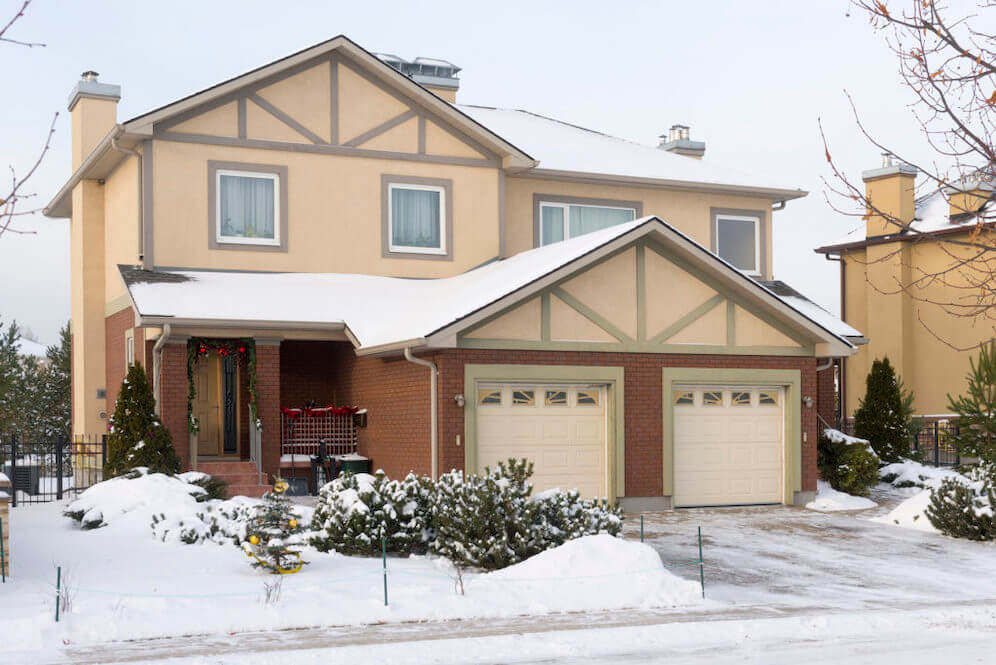
Problem #4: Damaged or Worn Weatherstripping
The weatherstripping around your door can stiffen and crack due to exposure to cold air. As a result, it can’t form an airtight seal when you close the door. This can let in liquid, which can lead to the garage door freezing to the ground. It doesn’t help your heating bills, either! Weatherstripping also helps keep moisture from getting into your door’s moving parts. This moisture can then freeze, which impedes door movement.
Problem #5: Garage Door Frozen To Ground
If snow and ice build-up at the base of your garage door, it can freeze to the ground. You may also have the opposite problem where your garage door won’t stay down in cold weather. Even if it doesn’t freeze, the door isn’t making complete contact with the ground, which lets in cold air. Wet concrete is also a breeding ground for mildew, which is the last thing you want in your garage.
Problem #6: Broken Springs
Another common garage door problem in winter is broken springs. The springs are responsible for counteracting the force of gravity, which means they make the door light enough to open. They’re rigid and fragile by nature, and this can be exacerbated by cold weather. If your door feels heavy when you try to lift it, the springs may be broken.
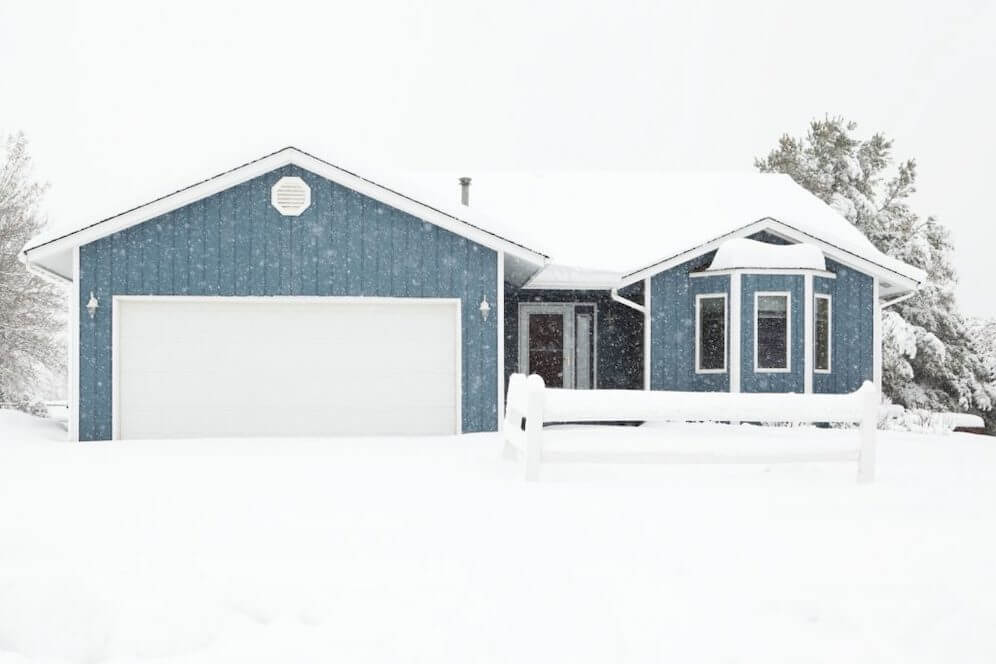
Problem #7: Condensation on Safety Sensors
Last (but not least!) is condensation buildup on the door’s safety sensors. If you live in an area that experiences rapid temperature fluctuations, you’ll probably see condensation on your windows. The same thing can happen to your garage door’s safety sensors.
If enough condensation builds up, it can obstruct the infrared beams projected by the sensors. As a result, the door may “see” an obstruction in its path, even if there isn’t one. To solve this problem, simply wipe off your sensors on a regular basis or whenever you have issues.
